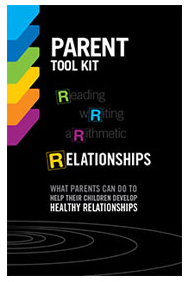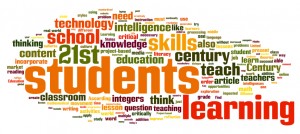 When my children were very young it seemed natural to model the skills necessary for them to have healthy relationships. Things like, explaining hurt feelings, encouraging active play, asking them about their day, reinforcing positives through the day (e.g. “That was nice sharing!”) and being there when they needed me seemed like second nature.
When my children were very young it seemed natural to model the skills necessary for them to have healthy relationships. Things like, explaining hurt feelings, encouraging active play, asking them about their day, reinforcing positives through the day (e.g. “That was nice sharing!”) and being there when they needed me seemed like second nature.
With the blink of an eye my children have become teenagers. When I reflect on my current role as a parent I have become acutely aware that many of the same principles of mentoring that I modelled when they were young are just as important now. Although sometimes it can be challenging, I realize that acting as a mentor is how I can have the most influence over their academic success and the choices they are making in forming healthy relationships.
I was recently reading through a document called, “Parent Tool Kit: What Parents Can Do to Help Their Children Develop Healthy  Relationships.” Although most of what I read about mentoring children was familiar, the following tips resonated with me, both as a mother and educator, and I wanted to share them with you today:
Relationships.” Although most of what I read about mentoring children was familiar, the following tips resonated with me, both as a mother and educator, and I wanted to share them with you today:
- Connect positively with your children at every opportunity
- Relate to your child or teen in an age-appropriate way
- Help your child develop empathy and respect
- Help reduce stress in their lives
- Be there: supervision matters
- Accept mistakes as learning opportunities
- Watch for signs of an unhealthy relationship
- Remember positive parenting works
Tips taken from: http://www.ontariodirectors.ca/
Other Parent Tool Kit Links:
1. Parent Resources Page (TVDSB)
2. Parent Tool Kit from the Ottawa Board of Education
– I particularly like “Who’s Homework Is It Anyway!” (page 16)
– original link is from C.O.D.E.
3. Parent Involvement Kit – from People For Education
4. Parent Tool Kit – from the Council of Ontario Directors
5. Ontario Ministry of Education – For Parents Section
6. My Child’s Learning – A Parent Resource
– from the Alberta Ministry of Education
– different from Ontario; enough is the same to provide good insights
– very interactive and easy to follow

 teach you how to respond to questions like, “Where does energy come from? “ or, “What would the world be like if we could stop aging from happening?” Consider the skills necessary for students to respond to these promising questions beyond a Google search. I am not suggesting the abandoning of math facts or word study, but rather the integration of learning through rich questions taking students to levels of learning that, “What is size of the sun?” cannot take them.
teach you how to respond to questions like, “Where does energy come from? “ or, “What would the world be like if we could stop aging from happening?” Consider the skills necessary for students to respond to these promising questions beyond a Google search. I am not suggesting the abandoning of math facts or word study, but rather the integration of learning through rich questions taking students to levels of learning that, “What is size of the sun?” cannot take them. I have often been described as an optimist. Truth be told, I have always thought that believing good things will happen is the first step towards good things actually happening. I remember hearing that, before taking a foul shot, the famous basketball player, Michael Jordan would visualize the ball going into the basket. This always stuck with me.
I have often been described as an optimist. Truth be told, I have always thought that believing good things will happen is the first step towards good things actually happening. I remember hearing that, before taking a foul shot, the famous basketball player, Michael Jordan would visualize the ball going into the basket. This always stuck with me.
